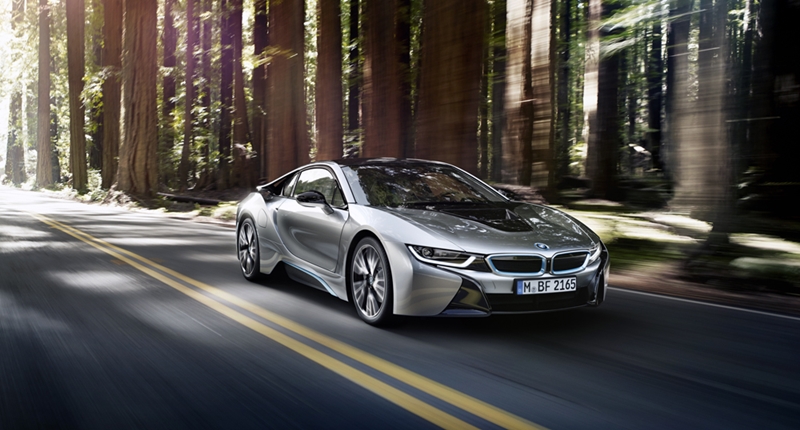Roughly 83.48 percent* of all press releases issued by car manufacturers contain the word “innovativeâ€.
Thing is, hardly any of the vehicles mentioned in such adjective-laden PR material genuinely embody true innovation.
No ad to show here.
Sure, practically every new car is an improvement on its predecessor, but how many are groundbreaking? How many are, indeed, novel?
Yes, where improvement is the act of merely doing something better, innovation is the feat of doing something completely different. And doing it well.
With this in mind, Motorburn decided to look back at some of the most innovative automobiles of 2013.
Bear in mind that weâ€
Right, let the arguments begin…
1. BMW i3
The i3 is BMWâ€
What makes it particularly special is the material used to construct the lightweight body. BMWâ€
But, perhaps most importantly of all, the arrival of the i3 clearly indicates that BMW is serious about e-mobility. Relatively affordable mass-produced carbon-fibre cars? Yes, itâ€
2. Volkswagen XL1
When the curiously styled XL1 first arrived on the scene as a concept, few believed it would see the light of day. But Volkswagen then let slip that it would be produced in exceedingly limited numbers (word on the street is that there wonâ€
The German giant claims that the lightweight XL1 is the worldâ€
So, how does it manage to take such small sips? Well, it employs an 800cc, two-cylinder TDI engine (basically, one half of VWâ€
3. Mercedes-Benz S-Class
No list detailing automotive innovations would be complete without the Mercedes-Benz S-Class. In fact, the Daimler-owned manufacturer customarily uses this luxury sedan to debut its latest, mind-meltingly impressive technology.
This year was no different. The new S-Class is jam-packed with remarkable tech, including a raft of active safety features that move the motorist even closer to automated driving and intelligent vehicles.
Its suspension has “eyesâ€, its dashboard is not far off being one big screen, and not a single conventional light bulb can be found anywhere in the car. LEDs are instead used, including in the headlight clusters, which cast extra light on potential roadside hazards (pedestrians, animals, cyclists, etc.) picked up by the vast array of cameras. The rear seatbelts even boast airbags, for goodness’ sake.
4. Nissan Qashqai
Nissanâ€
Thatâ€
Low-speed manoeuvres are well covered too, with a “helicopter view†function, park assist (rendering parallel parking rather unchallenging), and even a system that detects and highlights moving objects while the vehicle is being parked. All of this while still functioning as a practical, spacious, relatively affordable family SUV.
5. Porsche 918 Spyder
How would you define the automotive Holy Grail? How about earth-pleasing efficiency and face-shattering performance without one being at the cost of the other? Well, thatâ€
The full hybrid drive system makes use of a high-revving 4.6-litre V8 petrol engine (which features no external belt drives) mated in parallel to a 115kW electric motor. Then thereâ€
Such is the cost of next-generation technology that Porsche will lose a wad of cash on each 918 sold. And that shows you just how determined the German car-maker is to push the boundaries.
6. Ford Fiesta 1.0 EcoBoost
Okay, so this particular EcoBoost engine hit a few markets late in 2012, but it was rolled out in many more countries in 2013. And the UK-designed powerplant continues to scoop up the awards.
What makes it exceptional? Well, it delivers big-engine performance and small-engine efficiency. Somehow, Ford has managed to squeeze 92kW and 170Nm from the turbocharged 999cc three-cylinder mill, while still keeping the claimed fuel economy at a hybrid-rivaling 4.3 litres per 100km.
Impressive stuff. As is the fact that it appears to have inspired a raft of turbo triples from competing manufacturers.
7. Volkswagen e-Up!
Despite the frankly annoying exclamation mark in its name, this diminutive VW lays claim to an impressive title. It is apparently the most efficient EV out there, consuming just 11.7kW of electricity per 100km.
The front-wheel drive e-Up! boasts a small electric motor (60kW/210Nm), a lithium-ion battery integrated into the floor and a single-speed gearbox, as well as five regenerative braking levels. While it certainly isnâ€
As is, of course, how light it is on “juiceâ€.
8. BMW i8
Like the i3, this Beemer is a lightweight vehicle with a penchant for efficiency. But it is more “distant cousin†that it is “siblingâ€, since it uses plug-in hybrid technology (as opposed to the i3â€
A 1.5-litre three-cylinder turbocharged engine sends its substantial power to the rear wheels, while an electric drive system gives life to the front wheels. Vital figures include a zero to 100km/h sprint time of 4.4 seconds and a claimed fuel economy figure of 2.5 litres per 100km.
Interestingly, the BMW i8 is also the worldâ€
*Although this is an entirely fictitious statistic, believe us when we say that itâ€
Images: Newspress.
